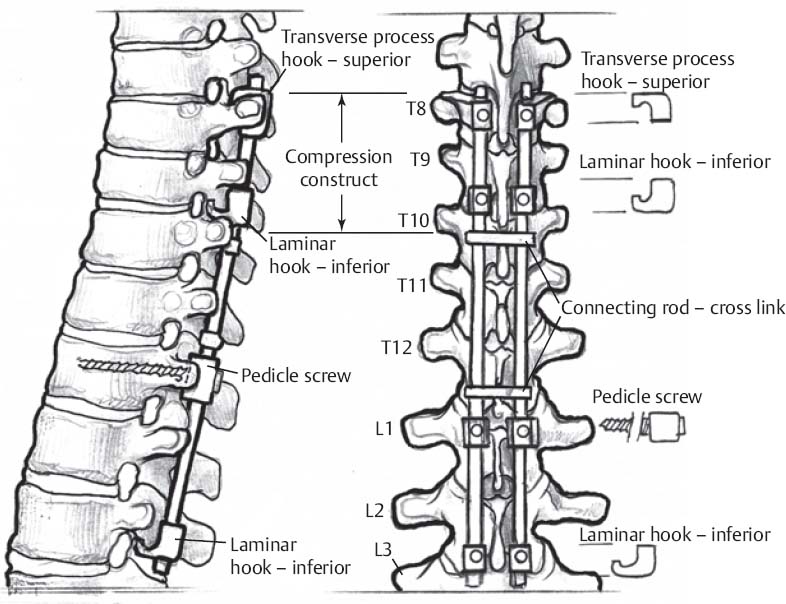♦ Preoperative
Imaging
- Plain x-rays to evaluate alignment, count ribs, and identify natural fiducials which may facilitate correlation of intraoperative imaging findings with magnetic resonance images.
- Long cassette films of the thoracic and lumbar spine are useful to evaluate sagittal balance.
- Computed tomography useful for the above purposes as well as to evaluate bone quality and to size implants.
- Dynamic, flexion/extension radiographs can be helpful when instability is suspected. Lateral bending films can help in evaluation of flexibility of coronal curves.
Preoperative Care
- Antimicrobial bathing prior to surgery may be helpful.
- Consider postponing elective cases if untreated infectious process is active.
Equipment
- Fluoroscopy and plain film radiographs are extremely helpful.
- Intraoperative axial tomographic images are potentially helpful.
Operating Room Set-up
- Prophylactic antibiotics are very important, as is strict maintenance of the sterile field. Consider administering first dose 10 to 50 minutes prior to skin incision and repeat periodically, more frequently with significant blood loss and transfusion greater than two units.
- Consider Foley catheter to drain bladder and minimize inferior vena cava compression and resultant venous oozing.
- If possible, avoid positive end expiratory pressure to reduce venous bleeding. Try to maintain low airway pressures if possible. More frequent breaths with a lower tidal volume may be an effective strategy.
- Lead vests with thyroid protection or nearby lead walls for radiation protection are important.
Positioning
- Prone position with abdomen dependent. Jackson frame or gel rolls are useful.
- Take care to pad pressure points, especially eyes, areolae, and genitals.
- Prep well above and below anticipated incision in case additional exposure is needed or additional levels must be included.
- Drape iliac crest into field in case autograft is needed.
- Safety straps above and below field to allow for safe table rotation if needed
♦ Intraoperative (Fig. 114.1)
Exposure
- Loupe magnification is generally adequate and allows for wider field of view.
- Obtain sufficient images (fluoroscopic and/or plain films) until extent of exposure and levels is confirmed.
< div class='tao-gold-member'>
Fig. 114.1 Schematic of posterior thoracolumbar instrumentation.
Only gold members can continue reading. Log In or Register to continue
Stay updated, free articles. Join our Telegram channel

Full access? Get Clinical Tree





